How to make a Kylie Can't Get You Out Of My Head-style organ sound
Replicate this classic drawbar-organ style synth patch
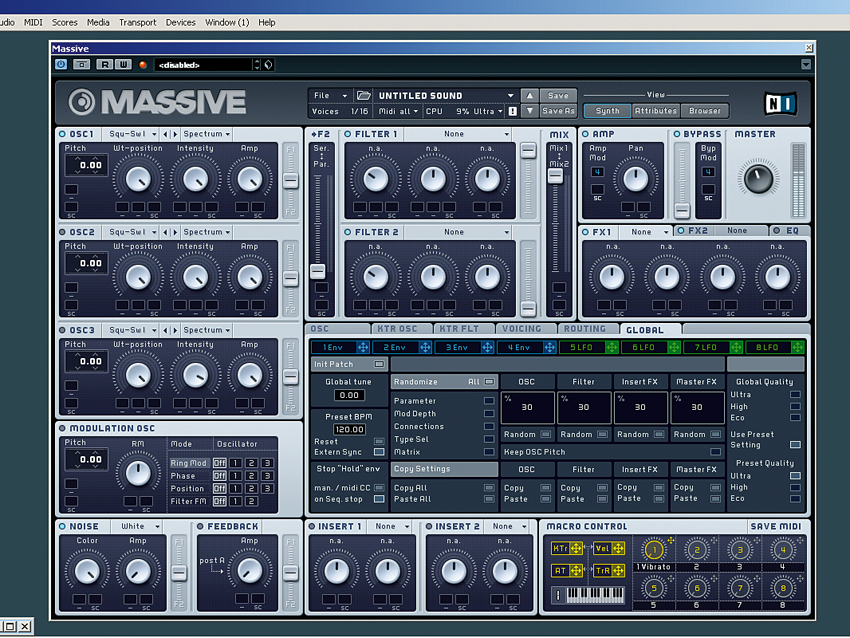
Getting started...
Here we’re looking at replicating the off-beat chord stabs that you find throughout Kylie’s pop classic Can’t Get You Out Of My Head.
It’s one of those quintessential patches that helped to define an era - in this case, ‘90s dance music. We’re pretty sure that the sound originates from a drawbar organ, which works a bit like an additive synth, allowing the user to mix in the levels of differently sized pipes.
Watch the tutorial video below and read on for our step-by-step walkthrough
Step 1: To get the basic sound, we need a synth with at least three oscillators that have individual amplitude envelopes available to them. Most FM synths can do this very easily; however, we’re going for NI’s Massive because it’s easy to show you how the patch works. Before getting started, make sure you click on File at the top of the interface and select New Sound.
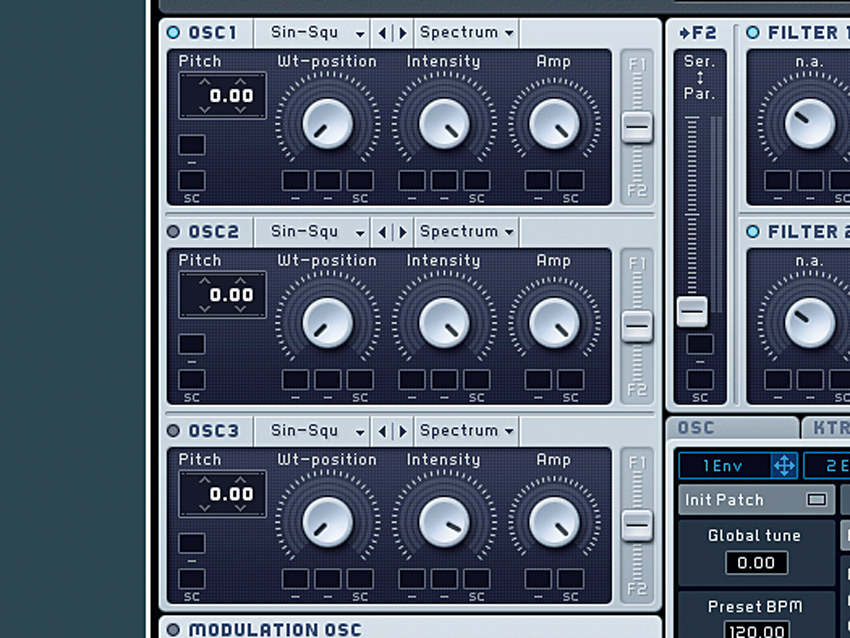
Sine waves
Step 2: We’re going to roughly simulate the sound of a drawbar organ, which is best done with sine oscillators. Set OSC1, OSC2 and OSC3 to Sin-Square (use the dropdowns next to the OSC labels) and turn all Wt-position knobs anticlockwise. This turns all three oscillators into sine waves, although we can only hear OSC1 so far, as it’s the only one that’s active.
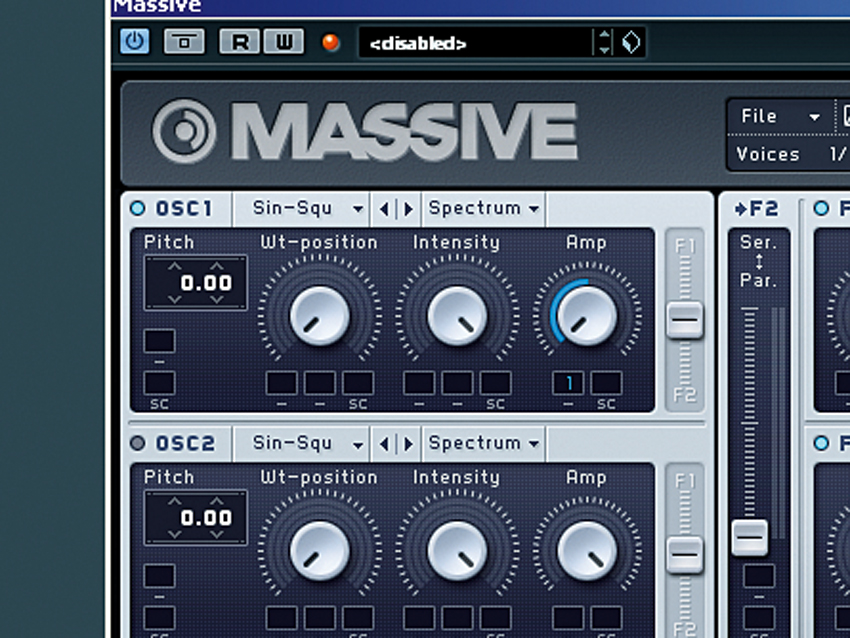
Tweaking OSC1
Step 3: Take OSC1’s Amp knob all the way to the bottom, leaving no sound at all - we’ll set up an envelope to give it shape. Drag 1Env’s modulation handle (the cross with the arrows) into the Amp knob’s first modulation slot and drag the slot up until it hits around 50%. Now click on 1Env and turn the Attack knob all the way to the bottom, producing a sharp attack.
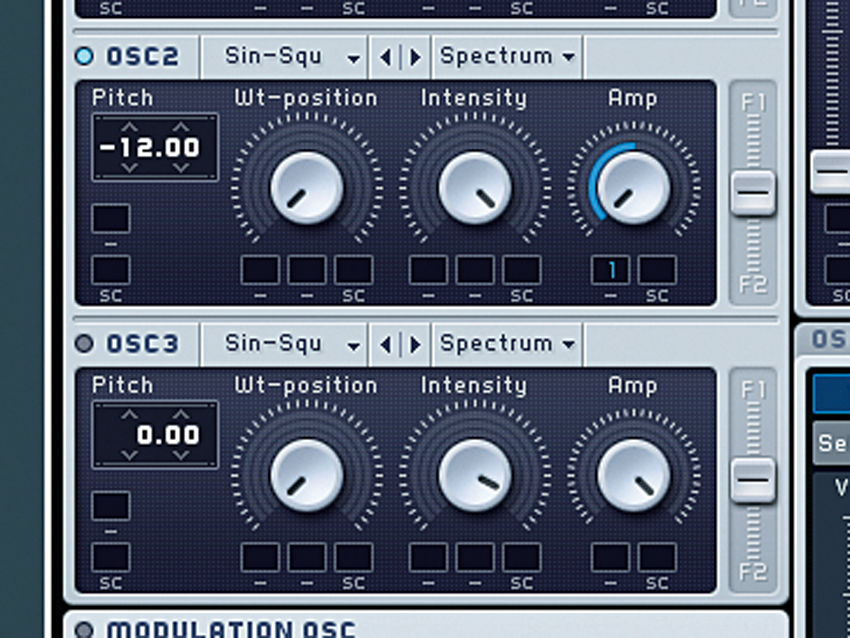
Tweaking OSC2
Step 4: Let’s have a look at OSC2 next. First, reduce its Pitch to -12.00 semitones - this interval is an octave below the pitch of OSC1, known as the sub fundamental on a drawbar organ. Take OSC2’s Amp knob all the way to the bottom, then activate the oscillator. As with OSC1, assign 1Env to the Amp knob’s mod slot, using an amount of 50% (ie, the same amount as before).
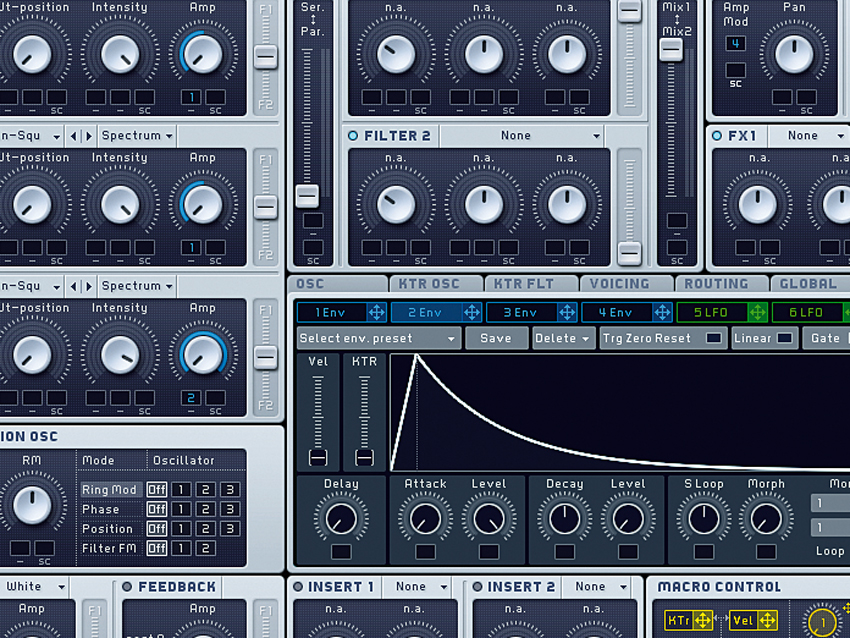
Setting OSC3
Step 5: Click on 2Env and pull its Attack all the way down to the bottom, then set its Decay Level to the minimum value as well. This is going to be the amplitude envelope for OSC3, so turn this oscillator’s Amp knob fully anticlockwise also. Set 2Env to control OSC3’s Amp modulation by the full amount and then activate OSC3.
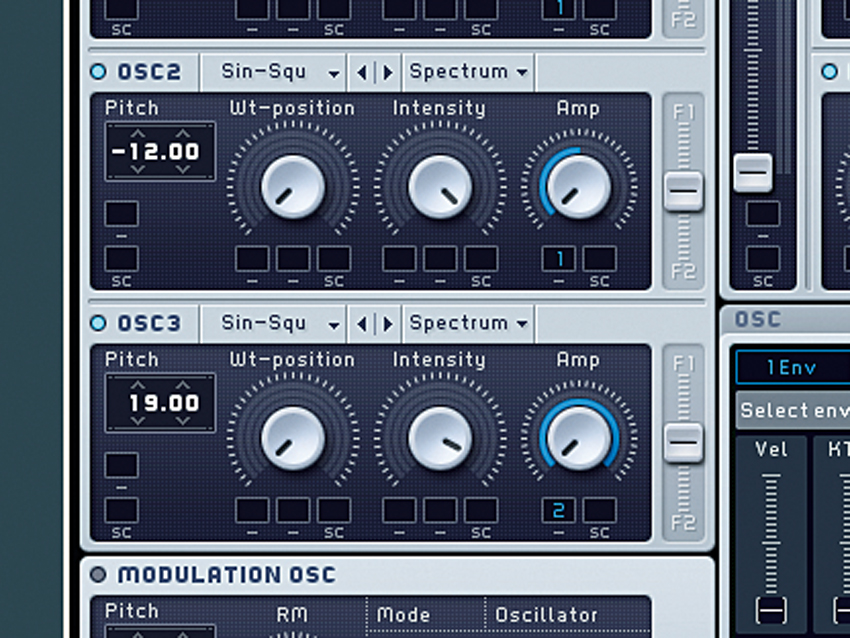
One final touch...
Step 6: Something’s not quite right–OSC3 should be tuned much higher. Push the Pitch up to 19.00 (an octave plus a perfect fifth) - that’s it! With this design, OSC3 is much louder than OSC1 and OSC2, but since OSC3 decays faster than the others, the imbalance takes place only for the transient, not the body of the sound.

Computer Music magazine is the world’s best selling publication dedicated solely to making great music with your Mac or PC computer. Each issue it brings its lucky readers the best in cutting-edge tutorials, need-to-know, expert software reviews and even all the tools you actually need to make great music today, courtesy of our legendary CM Plugin Suite.











